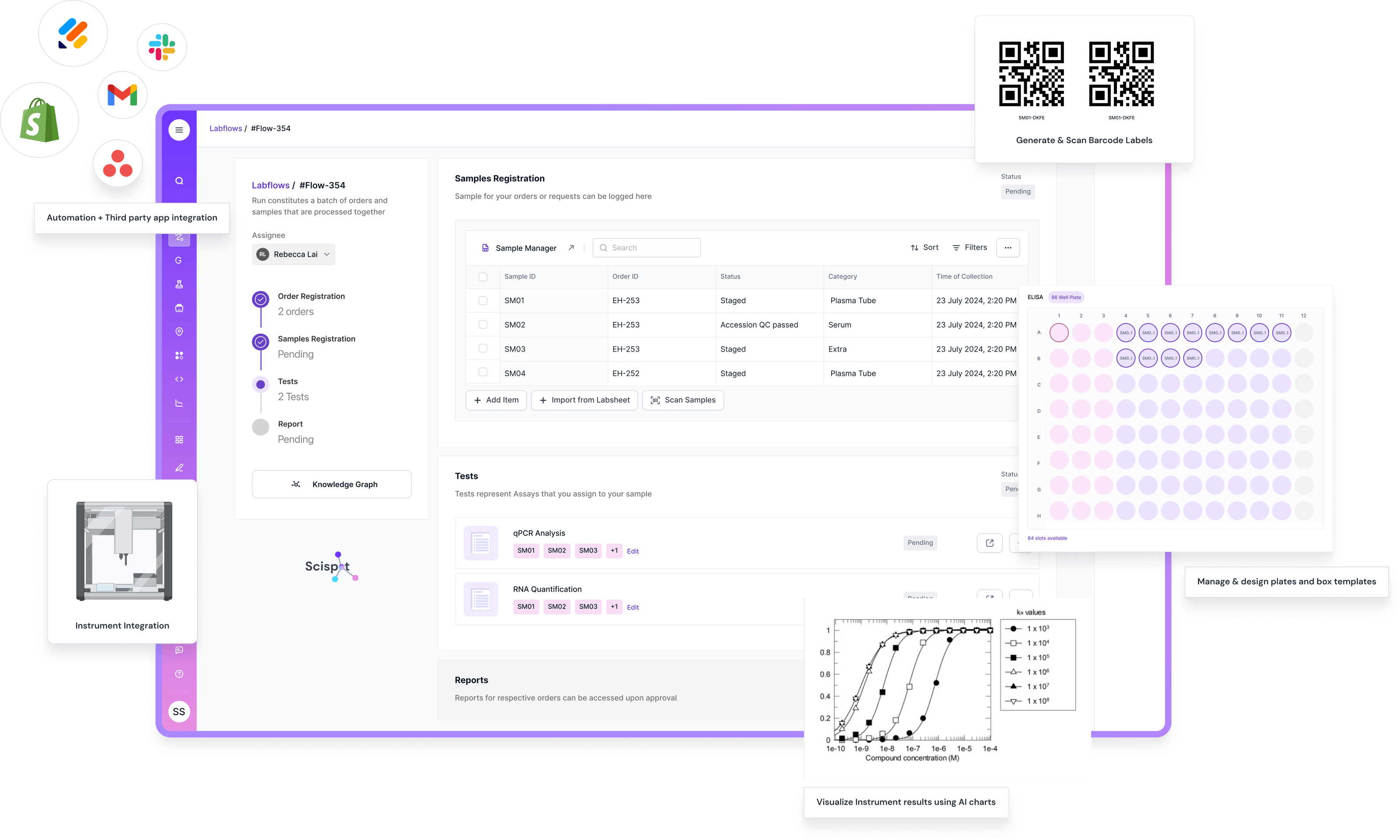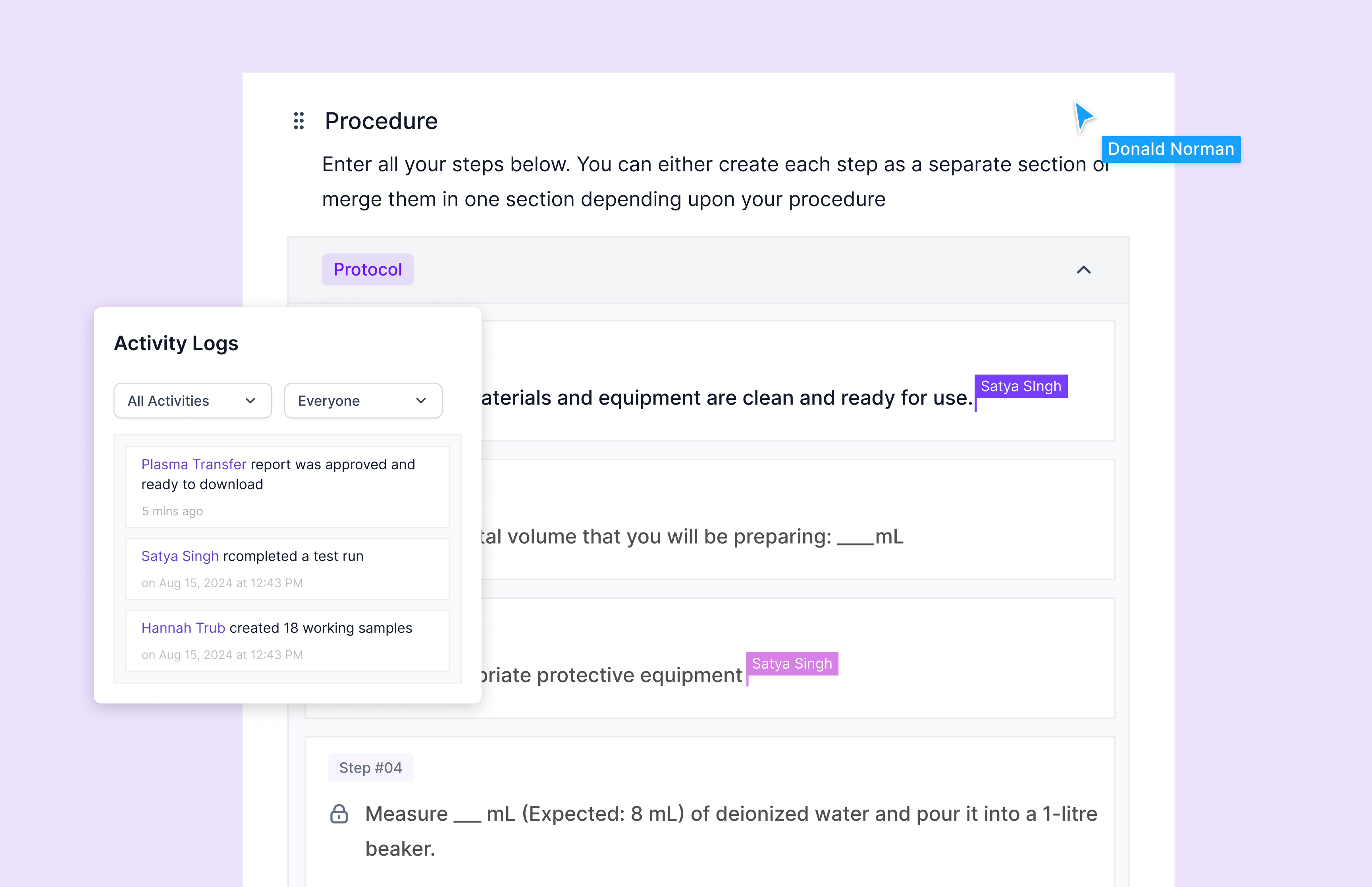For decades, laboratories operated with two primary pillars: the electronic lab notebook (ELN) and the laboratory information management system (LIMS). The ELN captured the narrative — the methods, intentions, and insights behind the science. The LIMS focused on logistics — tracking inventory, samples, and process statuses. Both tools remain important, but today, they are no longer enough. Modern lab workflows stretch across instruments, teams, and external vendors. Data must now be machine-readable, richly structured, and interconnected. Decisions need to be gated by real-time policy enforcement. Analytical models should operate within the core workflow, not on the periphery. What makes all of this possible is a new foundational platform: the Lab Operating System.

A LabOS is not a rebranded ELN or an evolved LIMS. It’s a new layer that sits underneath them — a data and workflow infrastructure that connects, extends, and automates the lab’s core functions. It provides typed data capture and lineage tracing, ensuring every datapoint is structured and traceable. It includes an event-driven workflow engine that responds in real time and moves work forward automatically. It enforces policy at every junction — controlling access, validating input, and managing change. And it opens itself up with APIs that invite integration and interoperability. Crucially, it doesn't replace the ELN or LIMS — it integrates and elevates them, weaving them into a cohesive, dynamic, and intelligent system.
The mental model is elegant. Think in terms of objects and events. Objects are persistent: samples, runs, reagents, instruments, protocols, users, plates, wells, reports. Events are transient but essential: sample received, QC failed, run completed, model inferred, report signed. Objects live long and accumulate context. Events link those objects across time, forming a dynamic graph. This object-event map doesn’t just explain what happened — it becomes the single source of truth, powering everything from operational analytics to regulatory compliance to AI-driven predictions.

The LabOS does not demand a disruptive overhaul. It coexists gently with existing systems. ELNs can continue capturing freeform notes and scientific narrative. A well-functioning LIMS can still manage inventory and sample status. The LabOS connects to these systems — feeding them structured input, pulling out validated outputs, and orchestrating the rest. Instead of relying on fragile scripts and one-off integrations, the LabOS uses queues, policies, and APIs to standardize and automate. Instruments can stream structured data directly into typed tables. Events can instantly trigger QC processes or invoke AI models. Reports can pull cleanly from approved views that are policy-compliant by design. The result is not more software — it’s less glue, more clarity, and higher throughput.
The impact becomes evident in real-world flows. In cell therapy batch release, a LabOS ties intake samples to donors and lots. It captures preparation steps with structured fields and digital signatures. It runs assays, triggers QC processes automatically, and manages exception routing while allowing clean cases to flow without delay. Final batch reports link every result to inputs, processes, and versions — automatically. In clinical NGS workflows, accessioning, library prep, sequencing, variant calling, tumor board review, and final sign-out all write to the same data graph. Every decision connects to evidence. Handoffs are faster, and quality improves because context travels with the work, not separately from it.

LabOS culture is built on lightweight but powerful rituals. Teams regularly conduct schema reviews to determine which fields deserve structure and long-term tracking. They manage policies like software — versioned, tested, and reviewed. They hold event-driven retrospectives when timelines slip, tracking the root cause in system data rather than gut feeling. They monitor model and instrument drift with the same rigor as any other quality control process. They rehearse “evidence pack” drills in preparation for audits, ensuring readiness without panic. These habits foster continuous improvement and create systems that are easier for new members to learn and safer to scale.
The question of whether to build, buy, or blend a LabOS is real and contextual. Some organizations have the engineering maturity and capacity to build their own platform, giving them full control at the cost of maintaining every line of code. Others prefer to purchase a foundational platform and extend it using APIs and plugins — sacrificing some control for speed, stability, and support. Many pursue a hybrid approach, adopting a LabOS for the underlying data plane, event handling, and policy enforcement, and customizing the business logic and specific steps that make their workflows unique. What’s important is to count the cost — not just in the initial build, but in the endless maintenance of brittle glue-code that often burdens internal teams and slows innovation.
The economics of a LabOS are transformative. You spend less on duct-taping integrations that frequently break. You spend less on rework, because validation and lineage catch problems earlier. You spend less time panicking during audits, because the evidence has already been captured, structured, and linked. Instead, you invest more in platform thinking and staff training. The return shows up in cycle times, error rates, release velocity, and employee satisfaction. Talented people want to work in systems that amplify their impact and protect their focus.

Risk management also improves. A centralized platform narrows operational variance. To avoid over-engineering, every schema update and workflow change should tie back to measurable outcomes. To minimize shadow IT, the platform must be intuitive, responsive, and inviting. To reduce vendor lock-in, insist on open formats, exportable data, and internal control over IDs and mappings. Cultural resistance is also a real risk, which is best addressed through pairing, training, and a steady cadence of visible wins.
A phased rollout ensures momentum without disruption. In the first two weeks, choose one workflow and define its key objects and fields. Establish typed capture and create IDs with lineage. In the following four weeks, onboard one instrument class, set up validations, introduce events, wire in a simple QC job, and expose one API for analytics. In weeks seven to ten, add electronic signature gates, configure access controls, and log evidence automatically. Run a dry audit to prove readiness. After week eleven, onboard the next workflow, increase observability, introduce model inference, and iterate from there. This isn’t theoretical — it’s how successful LabOS implementations are shipped, incrementally and with impact.
Ultimately, the LabOS vision isn’t about automation for its own sake. It’s about moving repetitive toil from people to the platform. It’s about making the right way the easy way. It’s about transforming surprises into signals. Scientists deserve tools that surface critical context at the moment of decision. Leaders deserve metrics that reflect reality, not assumptions. With a LabOS, the lab evolves from a disconnected ecosystem of tools into a living, learning system.

In a future where speed, accuracy, and adaptability are key competitive advantages, the labs that learn fastest will win. Fast learning requires short feedback loops. Short loops depend on structured data, dependable events, and policy enforcement that supports flow instead of blocking it. A LabOS provides the foundation. From there, AI becomes a natural extension, not a one-off project. Reports cite evidence, not screenshots. Audits become walkthroughs, not fire drills. New assays launch faster, with less friction and fewer unknowns. Over time, the lab becomes a compounding engine of value.
In the end, the contrast between an ELN-LIMS stack and a LabOS is clear. The former records what happened. The latter runs the operation. One supports individuals. The other empowers the whole. If your goal is speed without compromising safety, then the system that runs your lab — the LabOS — is the one to choose.
.gif)




.jpg)
.webp)
.webp)
.webp)



